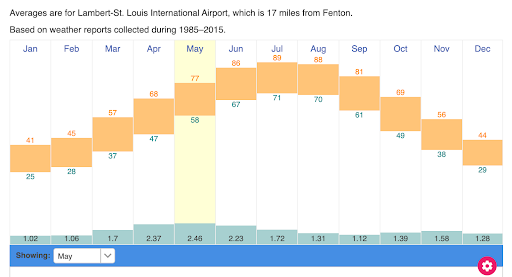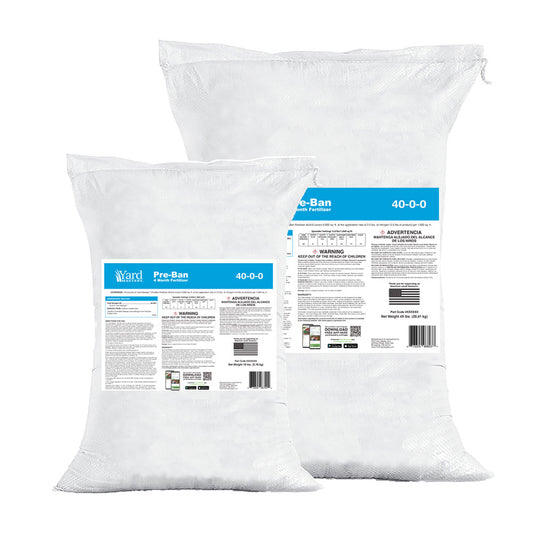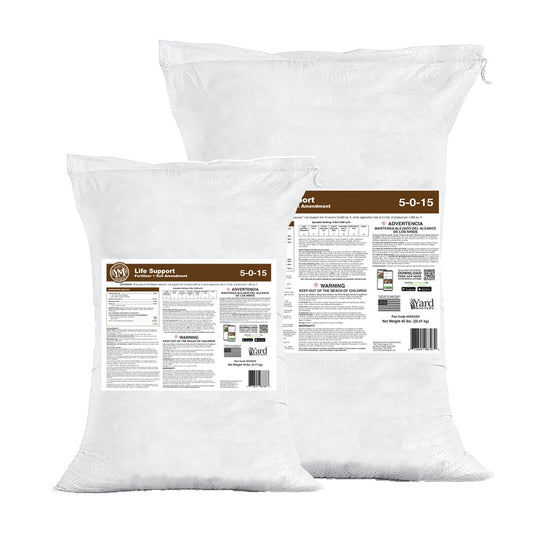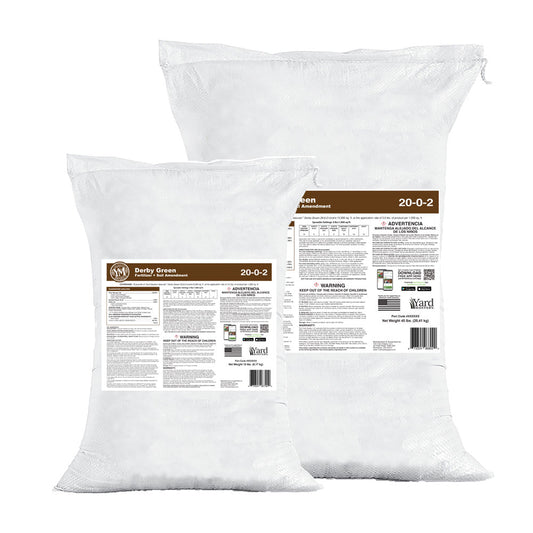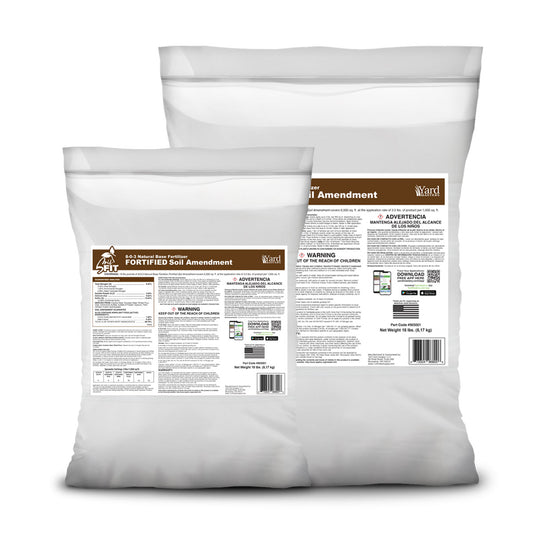In this quick little guide I’m going to show you how to work within the rules of your local municipality while training your lawn to survive on less water overall. And in the end, isn’t that the goal?
Watering Your Lawn This Summer
You’re Not Alone
The first thing to do when your town imposes watering restrictions is look up in the sky and realize, you’re not alone! You are going to get some rain.
I know it doesn’t seem like that when you’re standing outside at 1PM on a hot July Saturday looking at a struggling lawn, but you are going to get some rain help.

I use this predictive weather website and it gives you the average monthly rainfall for where you live. I pulled Fenton, MO for this example and you can see that even through July and August, your lawns there are getting 1” of rain per month. That’s FREE water!
Now… is that enough to keep your lawn dark green and vigorous on 90 degree days?
Probably not. But it’s certainly going to be a help.
It’s a piece of the strategy and an important one.
And that was just one example in the midwest - but what about those of you across the Gulf states of Texas, Alabama, Mississippi, Louisiana and Florida - the summer is actually the rainy season and your grass loves the combination of heat and daily rain!
The take away here is to check out this weather prediction website and find out how much rain you typically get each month in your area. This is a part of “learning your land” and it’s important not only for the grass, but for your sanity too!! Water bills can be scary. Rain can help you there too! 😁
How Much Water Do Lawns Need In Summer?
So now that you know you’re not alone, you still do realize you’ll still need to get out and water your lawn at some point during the summer right? Of course you do! 😁
If we have a “good year” you’ll water less, and if we have a “dry year” you’ll water more and maybe you’ll not be able to keep up with all of it. But either way, you’re gonna try and that is where a little knowledge can go a VERY long way.
Think about this: If you’re faced with watering restrictions, you had better make sure the watering that you are permitted to do is as efficient and effective as possible!
How Much Water Am I Putting Down?
If you are watering with manual sprinklers that you drag around, or you have an in-ground irrigation system, you can’t just go through summer saying “well I water 3 days per week” or “I run my sprinklers every morning for 10 minutes.”
None of that means much of anything, especially when you are dealing with watering restrictions on top.
What matters is EXACTLY how much water is going down and with irrigation, we measure in inches. Just like the weather person on the news will say, “In the city we got almost ¾” of rain today and another ½” or more is expected tomorrow.”
This is why people keep rain gauges out too - so they know how many inches of rain fell on their lawn or garden.
So when you are talking about watering your lawn you want to think about how many inches it’s getting per week.
Review this video for more details:
Ideally, lawns will get about 1.5” of water per week. This is all grass types - all times of the growing season. On average, 1.5” is what you want per week. Write that down.
It’s also best if you can get this water down in 3 sessions or cycles per week. We call this “deep and infrequent” watering. You want to water deep and then allow the lawn to dry out before watering again. We don’t want it to go “bone dry” but we also don’t want it to be constantly wet and water logged.
If you water 3x per week that means you’ll have 1-2 days in between irrigation cycles and you’ll be putting down ½” of water each time.
½” of water 3-times per week is 1.5”
½” of water is considered “deep” - write that down too! 😂
So there is the ideal scenario:
½” of water, 3x per week, all grass types.
Add It Up So Far
If there are 4 weeks in a month that means you’ll need 6” of water total for the lawn.
You’ll be getting some rain help. So in the case of Fenton, MO, you’ll get around 1.5” of rain help each month during the summer. A little more in June, a little less in August, but for easy math, you get 1.5” of rain help.
That means that you are responsible for the other 4.5” needed during the month.
If you are putting down ½” of water each time, then you are going to have to water 9 times during the month.
That’s it. Just 9 waterings a month. You can handle that right?
Now I realize that this is a “perfect case scenario” and things probably are not going to shake out perfectly like this. You may get rain but it’s not going to be ½” deep every time. Sometimes you may get a flooding rain only one time, others just mist here and there, etc. We could also have an abnormally dry year or in our favor a really wet year. We just don’t know.
The real purpose of this little exercise is to get you to CHANGE YOUR MINDSET when it comes to watering the lawn.
By me breaking it down this way, it gives you a roadmap but really what this does is give you an on ramp.
So many times people just tell me “There is no way I can keep up with watering the lawn” and they just never try. It’s a blocker to them. A dead end and they can’t see a way around.
But when you look at how I broke it down here in terms of inches and watering sessions, I bet you can handle 9 waterings a month can’t you?
Sure you can!!
That’s your on ramp. Now follow the road where it leads!
Small Lawns
I love my “postage stamp lawn” friends. Those of you with small lawns to love.
This concept is especially true if you have a smaller lawn that can be covered with just a single sprinkler. This Gilmour Pattern Master can handle a 2,500 sq ft area very easily, all on its own.
If you have a larger lawn, then you’ll get to have more fun moving sprinklers or maybe you can invest in an irrigation system that runs automatically.
“Bigger lawn, bigger budget - you just had to get that acre lot didn’t you?” 😂😂
Either way, my hope is that now you have some clarity and confidence to water your way through this summer even in the midst of watering restrictions that your town may impose.
How To Work Within Local Watering Restrictions
The first thing to realize with watering restrictions is that most of them are really not too limiting. They may restrict the days you can water, and how many, but from what I’ve seen, most are not so restricting that your lawn is going to die or anything.
Now I realize there are certain places that are outright banning lawn watering. There are going to be extremes and I’m not able to help you there.
But the key, no matter how lenient or strict your town’s ordinance is; THE KEY is to actually read the entire ordinance that your municipality publishes.
Don’t just read a news article talking about the restrictions, or trust what someone puts on your community Facebook page as headlines. You need the details so you can work within the rules and still gain the maximum benefit.
Go to the official ordinance on your county or town’s website and read the entire thing, front to back.
Look at some of what I have found in reading ordinances across the country:
Pinellas County, FL (ordinance)
Basics: Watering is limited to 2 days per week during certain hours. Watering days are dictated by odd/even house addresses.
But look at this added wording about testing your system.

On the weekends if it’s needed, it can be a good idea to test your zones on your irrigation system to ensure they are performing optimally. You never know when you will hit a head with the mower and throw it off so giving each zone this testing can keep things efficient. (and also offer you a little extra water for the lawn in the process) They seem to encourage this as often as once per week!
Austin, TX (ordinance)
Basics: Watering is allowed one day per week with your automatic irrigation system and if you need a second, additional day, you are allowed to use hoses and manual sprinklers for that. (I have no idea who came up with that idea 😁)
So essentially, it’s 2 days a week of watering. And here is some additional information that would be useful, especially if you have a smaller lawn.
This is telling me two things that are of interest to me and my lawn.
One is that I can hand water the driest areas of my lawn pretty much anytime if I have a hand-held hose and a spray nozzle or aqua thumb.
I like to drink my morning coffee outside and I bet I could keep up with any extra needed watering just by getting some fresh air and hand spraying a few mornings per week. In fact, I bet I’d be more efficient this way because I’d really learn how my lawn responds by doing it this way. And keep in mind, it’s not like it’s going to need hand watering every single day for 3 months straight. You only may need to supplement like this for 2-3 weeks in the hottest time of the year, that’s it!
Another thing it’s telling me is that I can pressure wash my driveway when needed and it just so happens that the areas of the lawn that dry out the quickest are those that border concrete areas like driveways and sidewalks. Therefore keeping my driveway clean and also results in some overspray and wash off to the areas of the lawn that need it the most. That’s a win-win!
There are many other examples that can be found by just reading your local ordinance and adapting to it. When you do this, you’ll find that most are not really that restrictive, you just have to work within the rules and you’ll be fine.
Supplements and Bio-Stimulants
I saved this for last but it’s really the thing that most people ask me about that is “what can I put on the lawn or in the soil that can help the grass use water more efficiently?”
This is where bio-stimulants that contain sea-kelp come into play. John Perry, founder of Greene County Fertilizer does a great job explaining the benefits in this video:

You can get sea kelp in a couple different forms. The easiest being RGS which stands for Root Growth Stimulant. You can get RGS quarts here with mix and match, buy 3 get one free.
RGS has Humic, Fulvic and 3% sea kelp. You can apply it as often as every week at 3oz/1,000 sq ft heading into summer and it will drive roots deep.
Here is a video where I show you how to spray it easily using a hose end sprayer.
Quarts here. (buy 3, get 1 free - Hydretain included)
Gallon size RGS here.
If you don’t need the added humic and fulvic and want a highly concentrated sea kelp product, then Liquid Sea Kelp for Lawns - Sea-K is an excellent choice. 1 quart covers 64,000 sq ft. I have a full video showing you how to mix Sea-K with Hydretain here.
Quarts here. (buy 3, get 1 free - Hydretain included)
Hydretain Granular and Liquid
Hydretain Moisture Manager is the PERFECT companion to sea kelp in preparing for, and making it through watering restrictions in summer. I have a full video that shows you how well it works by illustrating it in potted plants. Check that out here:
Gallons and Granular here.
Quarts here. (buy 3, get 1 free - Sea-K included)
Fertilizer with Potassium

Potassium helps lawns in stress. If a lawn is in need of water, no doubt it will be stressed. By applying potassium leading up to, and during summer, you can help reduce this stress in the lawn. It’s that simple.
This is exactly why I introduced Yard Mastery Stress Blend Fertilizer. It’s 20% potassium and 100% slow release nitrogen. You can apply this anytime in summer if the lawn isn’t dormant.
Get it down now and water it in and you’ll be pleasantly surprised at how green your lawn gets from it too!
Now available in smaller, 18lb bags that cover 6,000 sq ft.
Time To Execute On Your Plan
It’s now time to get your watering plan set up and ready. Start hammering in the sea kelp, apply your Hydretain and then hope for a good year of rain help!
With that in mind, please understand that we are still at the mercy of the weather here. The weather will always win so don’t try and fight it, instead roll with it.
If you live in Michigan and you end up having 2 weeks of days over 90 degrees, your lawn is going to struggle, no matter how much you water it. These conditions are just outside the boundaries of what cool season grasses can handle.
Same goes for St Augustine grass in Texas. If you get too many days over 100 and no cloud cover with zero rain, it won’t matter how much you water or how much sea kelp you apply, you are going to get some struggle spots every afternoon. These things happen.
All of the plans above are you controlling your controllables and trusting the process from there. You cannot control the weather but you can control the fact that you irrigate your lawn the most efficient way possible while remaining inside the rules set by your town. That’s what you need to focus on and then let the rest sort itself out.
There are good years and there are bad years and then there is everything in between. I don’t know what this year will bring as summer comes on us with no spring to remember, but one thing I know is that if you made it to the end of this guide, you’ve got enough knowledge to make it through to the other side no matter what comes your way.
I’ll see YOU in the lawn!
AL


